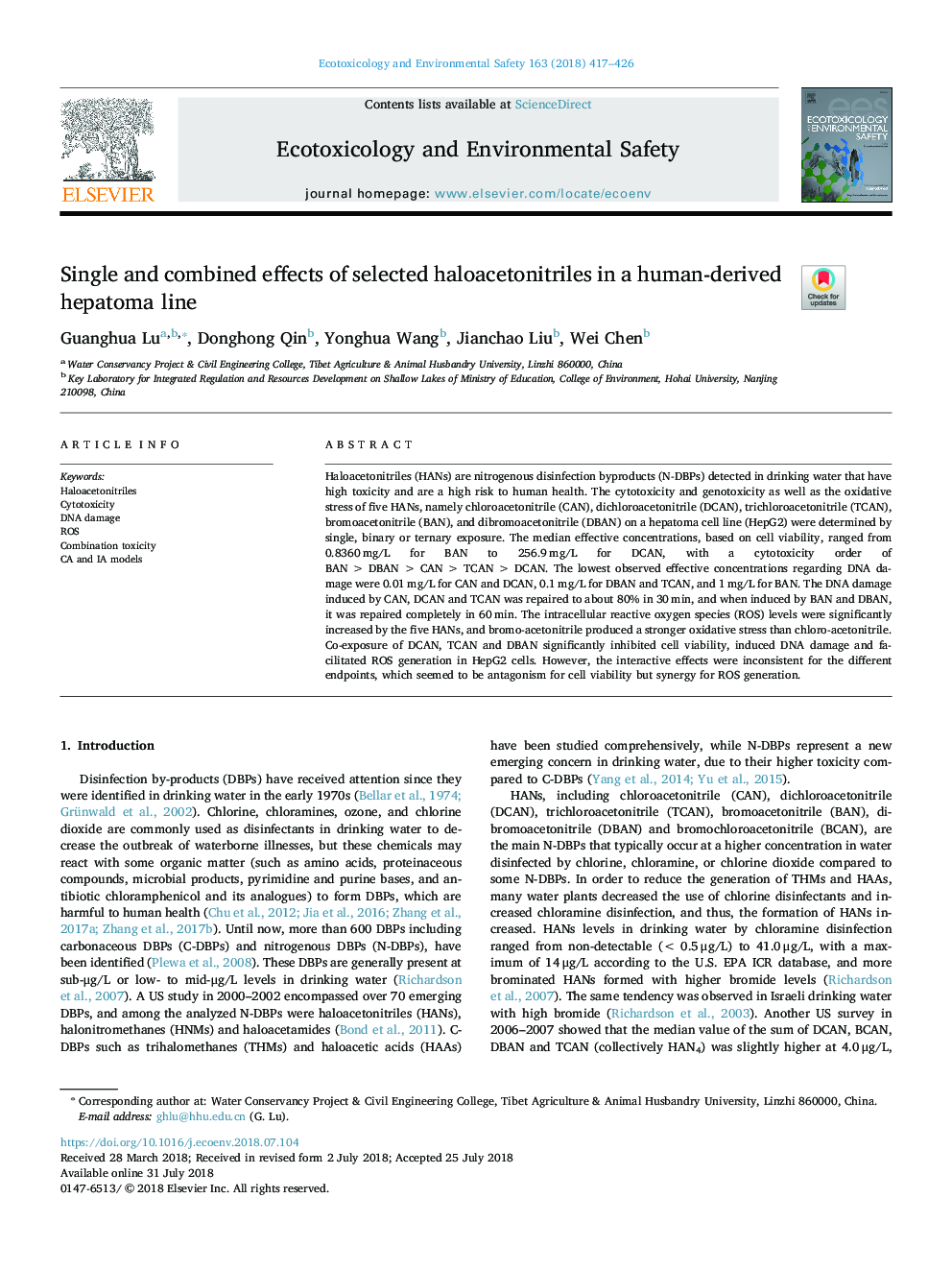| Article ID | Journal | Published Year | Pages | File Type |
|---|---|---|---|---|
| 8853194 | Ecotoxicology and Environmental Safety | 2018 | 10 Pages |
Abstract
Haloacetonitriles (HANs) are nitrogenous disinfection byproducts (N-DBPs) detected in drinking water that have high toxicity and are a high risk to human health. The cytotoxicity and genotoxicity as well as the oxidative stress of five HANs, namely chloroacetonitrile (CAN), dichloroacetonitrile (DCAN), trichloroacetonitrile (TCAN), bromoacetonitrile (BAN), and dibromoacetonitrile (DBAN) on a hepatoma cell line (HepG2) were determined by single, binary or ternary exposure. The median effective concentrations, based on cell viability, ranged from 0.8360â¯mg/L for BAN to 256.9â¯mg/L for DCAN, with a cytotoxicity order of BANâ¯>â¯DBANâ¯>â¯CANâ¯>â¯TCANâ¯>â¯DCAN. The lowest observed effective concentrations regarding DNA damage were 0.01â¯mg/L for CAN and DCAN, 0.1â¯mg/L for DBAN and TCAN, and 1â¯mg/L for BAN. The DNA damage induced by CAN, DCAN and TCAN was repaired to about 80% in 30â¯min, and when induced by BAN and DBAN, it was repaired completely in 60â¯min. The intracellular reactive oxygen species (ROS) levels were significantly increased by the five HANs, and bromo-acetonitrile produced a stronger oxidative stress than chloro-acetonitrile. Co-exposure of DCAN, TCAN and DBAN significantly inhibited cell viability, induced DNA damage and facilitated ROS generation in HepG2 cells. However, the interactive effects were inconsistent for the different endpoints, which seemed to be antagonism for cell viability but synergy for ROS generation.
Related Topics
Life Sciences
Environmental Science
Environmental Chemistry
Authors
Guanghua Lu, Donghong Qin, Yonghua Wang, Jianchao Liu, Wei Chen,
